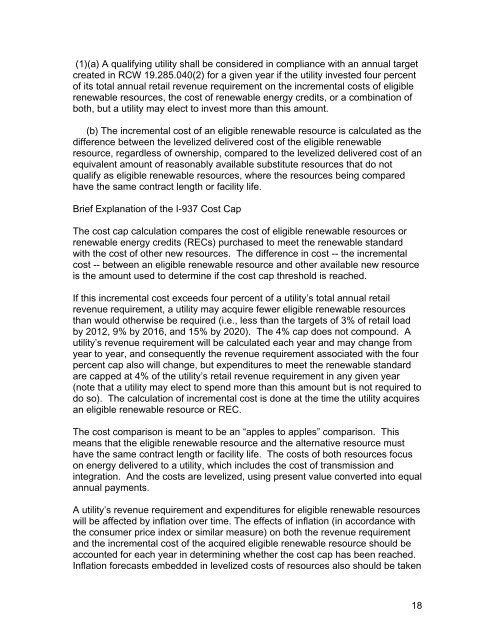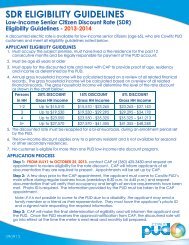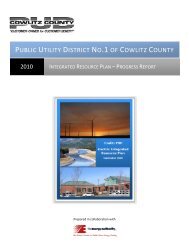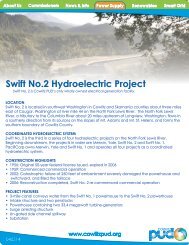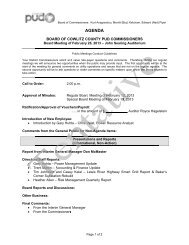- Cowlitz PUD
- Cowlitz PUD
- Cowlitz PUD
Create successful ePaper yourself
Turn your PDF publications into a flip-book with our unique Google optimized e-Paper software.
(1)(a) A qualifying utility shall be considered in compliance with an annual targetcreated in RCW 19.285.040(2) for a given year if the utility invested four percentof its total annual retail revenue requirement on the incremental costs of eligiblerenewable resources, the cost of renewable energy credits, or a combination ofboth, but a utility may elect to invest more than this amount.(b) The incremental cost of an eligible renewable resource is calculated as thedifference between the levelized delivered cost of the eligible renewableresource, regardless of ownership, compared to the levelized delivered cost of anequivalent amount of reasonably available substitute resources that do notqualify as eligible renewable resources, where the resources being comparedhave the same contract length or facility life.Brief Explanation of the I-937 Cost CapThe cost cap calculation compares the cost of eligible renewable resources orrenewable energy credits (RECs) purchased to meet the renewable standardwith the cost of other new resources. The difference in cost -- the incrementalcost -- between an eligible renewable resource and other available new resourceis the amount used to determine if the cost cap threshold is reached.If this incremental cost exceeds four percent of a utility’s total annual retailrevenue requirement, a utility may acquire fewer eligible renewable resourcesthan would otherwise be required (i.e., less than the targets of 3% of retail loadby 2012, 9% by 2016, and 15% by 2020). The 4% cap does not compound. Autility’s revenue requirement will be calculated each year and may change fromyear to year, and consequently the revenue requirement associated with the fourpercent cap also will change, but expenditures to meet the renewable standardare capped at 4% of the utility’s retail revenue requirement in any given year(note that a utility may elect to spend more than this amount but is not required todo so). The calculation of incremental cost is done at the time the utility acquiresan eligible renewable resource or REC.The cost comparison is meant to be an “apples to apples” comparison. Thismeans that the eligible renewable resource and the alternative resource musthave the same contract length or facility life. The costs of both resources focuson energy delivered to a utility, which includes the cost of transmission andintegration. And the costs are levelized, using present value converted into equalannual payments.A utility’s revenue requirement and expenditures for eligible renewable resourceswill be affected by inflation over time. The effects of inflation (in accordance withthe consumer price index or similar measure) on both the revenue requirementand the incremental cost of the acquired eligible renewable resource should beaccounted for each year in determining whether the cost cap has been reached.Inflation forecasts embedded in levelized costs of resources also should be taken18


